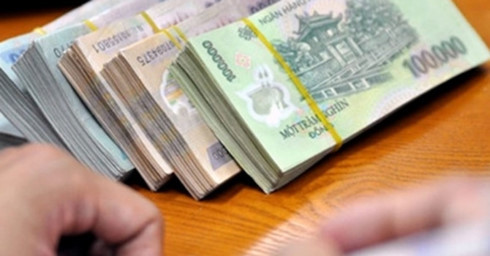 |
| Ảnh: |
Experts believe that low credit growth poses a major threat to the performance of commercial banks as credit normally adds some 70 per cent to revenues.
By April 17, credit growth had reached 3.23 per cent against the beginning of the year, much lower than the ratio of 5 per cent seen in the corresponding period in 2017 and 2018, and 3.5 per cent in previous years.
Experts believe that low credit growth poses a major threat to the performance of commercial banks as credit normally adds some 70 per cent to revenues.
VietinBank in particular sustained a combined pre-tax loss of VND853 billion (US$36.5 million) in the fourth quarter of 2018 as its lending slumped by VND26 trillion (US$1.11 billion). During the first quarter of 2019, VietinBank’s lending continued to fall by VND6.6 trillion (US$282.68 million), equivalent to 0.8 per cent of the figure seen at the end of 2018.
Eximbank also faced the same challenge as this bank saw its lending fell by 2.6 per cent, with credit outstanding balance dropping to below VND100 trillion (US$4.28 billion) and pre-tax profits plummeting by 38 per cent year on year.
Stagnant credit growth of small-scale banks such as Viet Capital Bank, NCB, and Saigonbank hampered their performance during the first four months of this year. The net interest income (NII) of Viet Capital Bank and NCB fell by 2.6 per cent and 22.7 per cent respectively, while Saigonbank edged up 0.8 per cent in NII.
Analysts predict a gloomy year ahead for lending by commercial banks amid the central bank’s tight credit policy, particularly credit for the local real estate market.
They anticipate that banks will find it challenging to keep up with the pace of profit growth as seen in previous years, unless they are able to gain non-recurring income from their services and divestment.
Economic expert Can Van Luc noted that the credit growth of 14 per cent set by the central bank for 2019 is a reasonable target as the country’s credit growth has escalated over the past three years.
Despite a slowdown in credit growth recorded in the year’s first quarter, the country still enjoyed a robust growth rate of 6.79 per cent in the three-month period. This underpins the fact that the Vietnamese economy’s reliance on credit fell amid the increasing presence of other capital mobilization channels.
The decreased credit growth should be considered good news as it illustrates that businesses and residents have managed to seek more channels for their borrowing, rather than depending on commercial banks.
In fact, capital mobilization has been extended via the intensified operations of peer-to-peer lending service providers as well as stock and bond markets. Most notably, corporate bonds reportedly enjoyed a boom during the first quarter of 2019.
However, Luc stressed that the current credit scale remains vast, equal to 131 per cent of GDP. He cited comments from international organizations and insiders as saying that the credit scale could pose risks in the long term when taken in comparison with the country’s economic scale.
Furthermore, equity increases failing to keep pace with credit growth in the past few years remains a worry, thus triggering a downward trend in the banking sector’s capital adequacy ratio.
VOV
 Credit growth was at a slower pace during the first quarter of this year, signaling the economy’s falling reliance on credit yet hampering the overall performance of commercial banks.
Credit growth was at a slower pace during the first quarter of this year, signaling the economy’s falling reliance on credit yet hampering the overall performance of commercial banks.